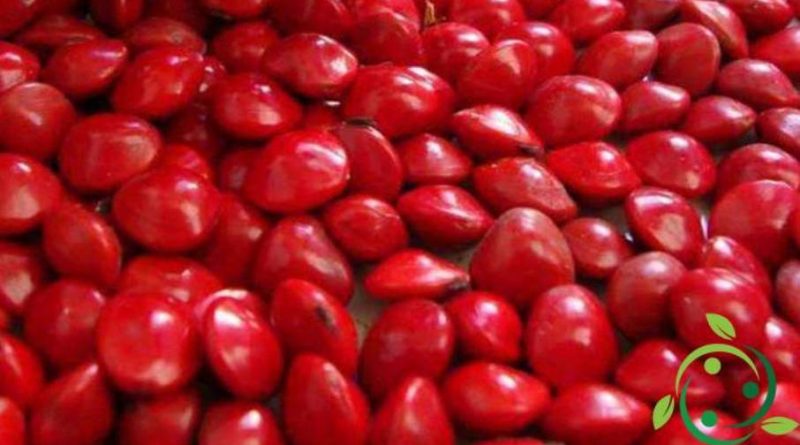Abrin
Abrin
Abrin is a substance contained in the seeds of the Abro (Abrus precatorius L.) a lianose shrub spice originating in an area between Indonesia, East Asia and Australia.
Abrin, from a chemical point of view, is a lectin, and in particular an extremely toxic hemagglutinin.
Reduced to powder, this substance has a yellowish-whitish color and is chemically stable, being able to resist even in hostile environmental conditions for a long time.
Even if you are close to the plants of Abrus precatorius, accidental exposure to abrin is extremely difficult, while its use as a poison is possible.
The substance can be taken by inhalation, ingestion, injection or skin contact (typical effects can be had with necklaces made by natives with the seeds of this plant).
Generally the symptoms occur in a time ranging from eight hours from exposure and can last from one to three days.
The symptoms of intake of abrin vary depending on the mode of intake, as well as the lethal dose for the human being varies: from 10 to 1000 micrograms per kg when ingested and about 3.3 micrograms per kg when inhaled, while if taken in the vein has an average lethal dose of 0.7 micrograms per kg.
Abrin is in fact one of the most lethal poisons known, which causes severe vomiting, high fever, salivation, very high levels of nervous tension, liver failure, bladder failure, bleeding from the eyes and convulsions.
Abrin is a substance very similar to ricin found in castor seeds. It is a lectin composed of two polypeptide chains (A and B) connected by a disulfide bridge. Abrin is in fact one of the most lethal poisons known, which causes severe vomiting, high fever, salivation, very high levels of nervous tension, liver failure, bladder failure, bleeding from the eyes and seizures.
Abrin is a substance very similar to ricin found in castor seeds. It is a lectin composed of two polypeptide chains (A and B) connected by a disulfide bridge
Since there is no antidote to abrin, exposure to the substance should be avoided in the first place. In the event that this occurs, an attempt is made to expel it from the body as quickly as possible. Therapy varies according to the mode of intake, but the most used treatments include the aid of respiratory function, the administration of fluids intravenously and gastric lavage by means of activated carbon.
In Nigeria the seeds of this plant are used to treat diarrhea.
The poisonousness of the seeds was known by the Siddhars (individuals who have achieved perfection in local spirituality) and in fact suggested various methods for removing the poison, which are called “suththi seythal” or purification.
Warning: The information shown is not medical advice and may not be accurate. The contents are for illustrative purposes only and do not replace medical advice.

